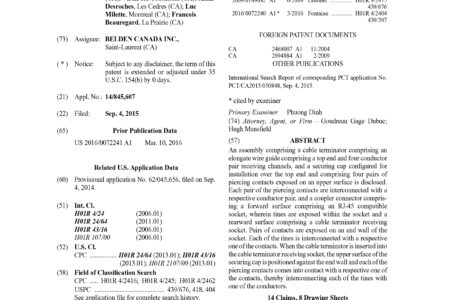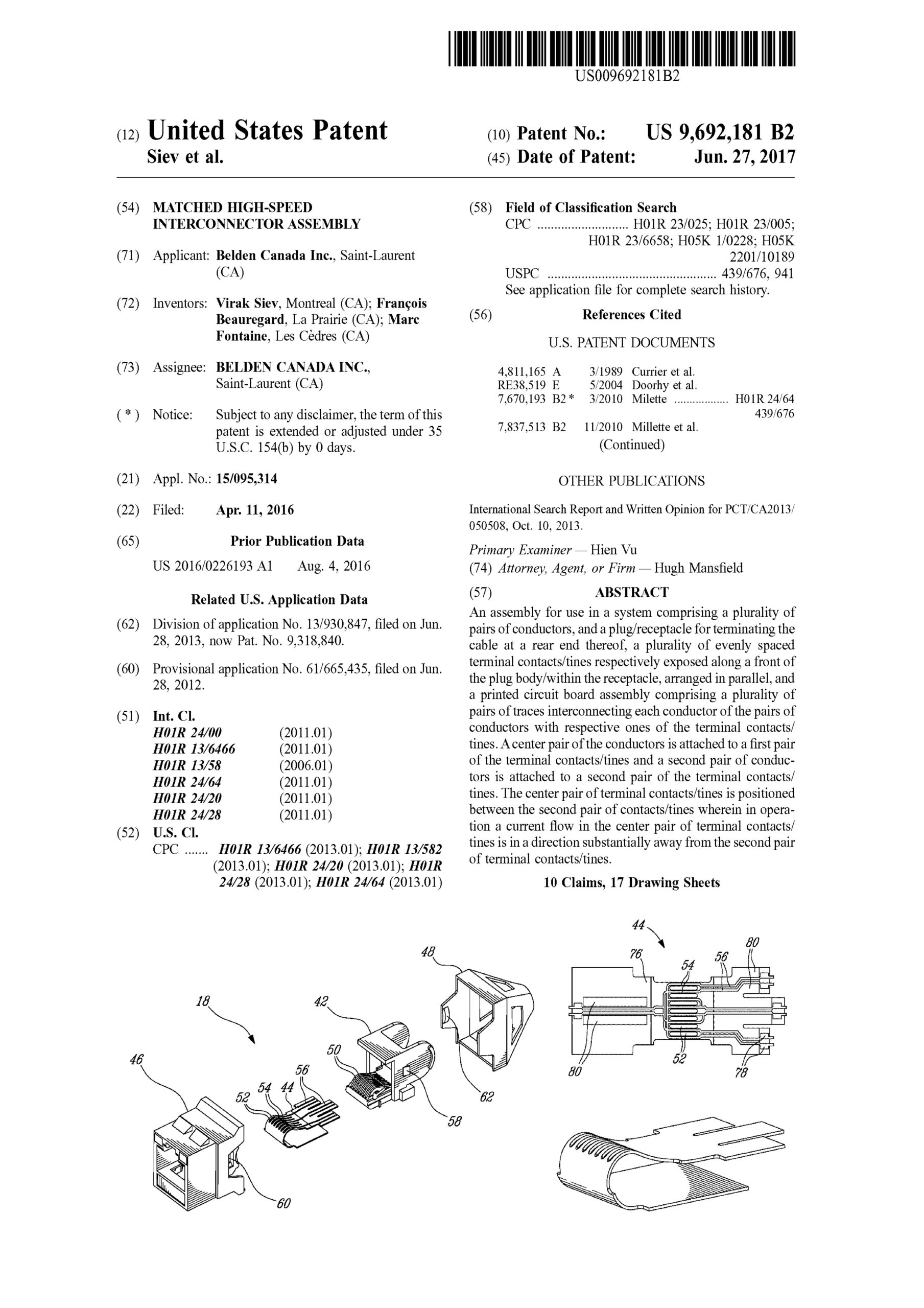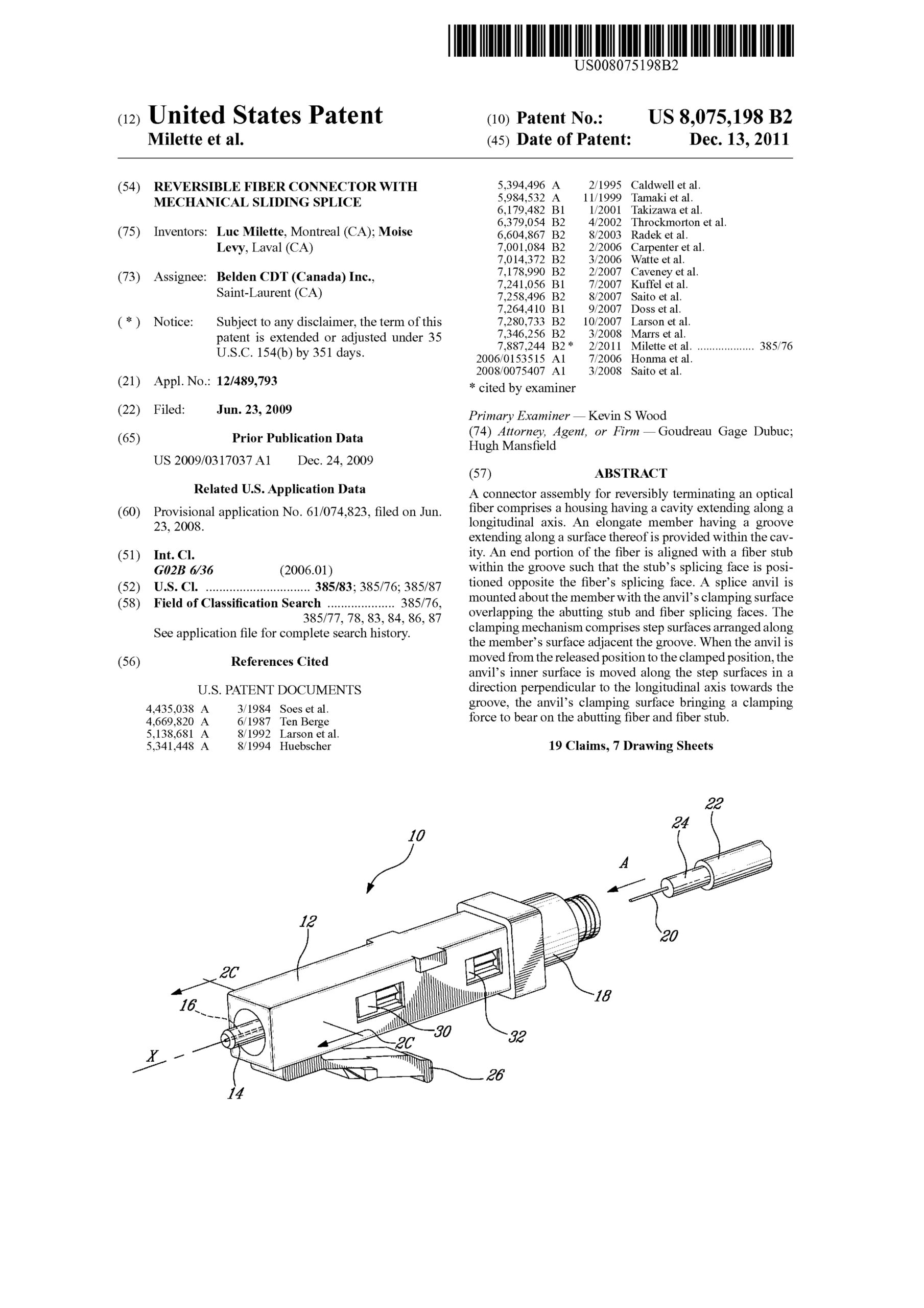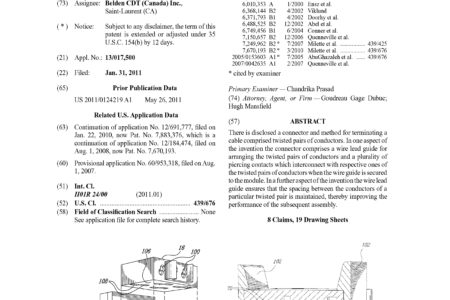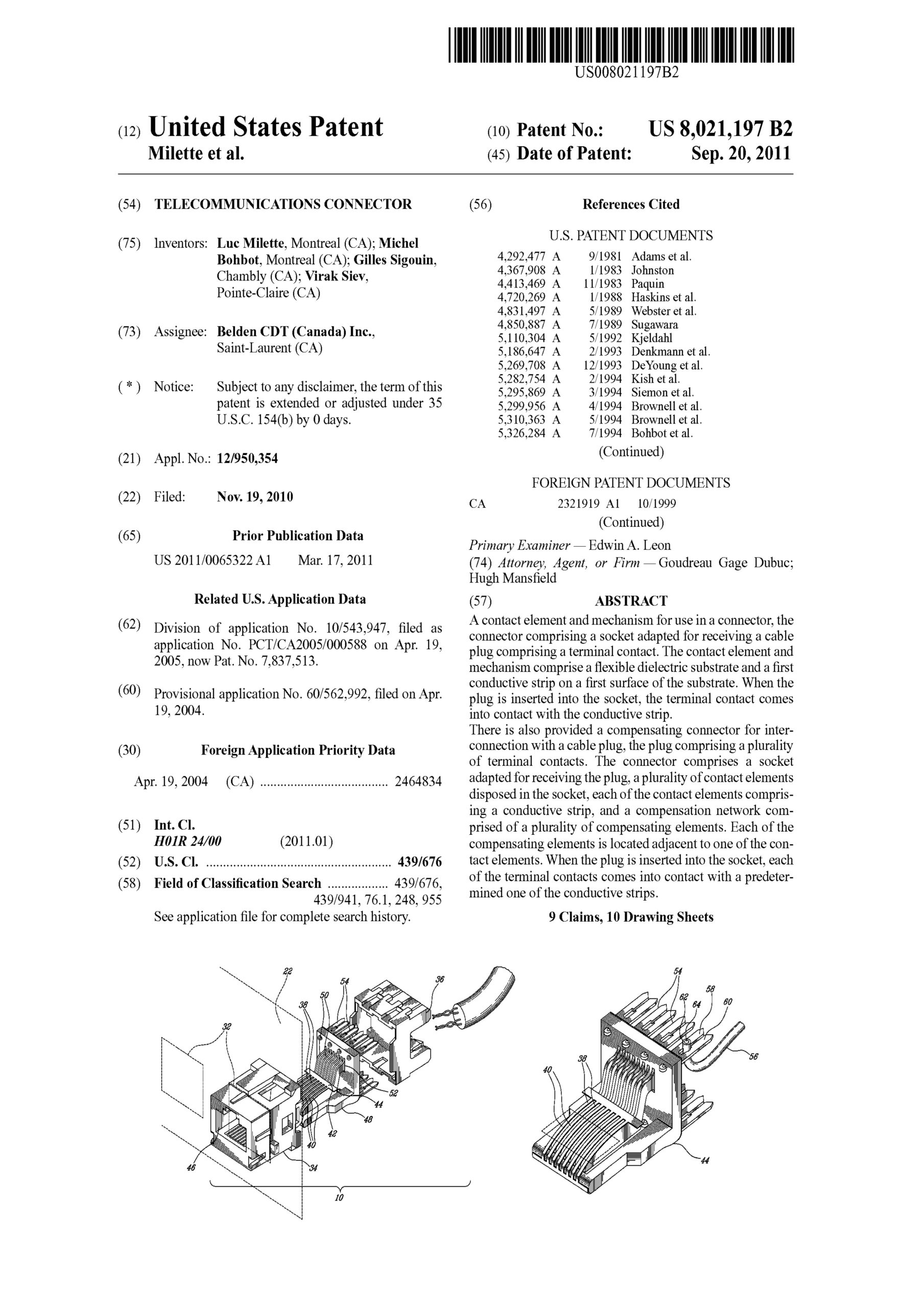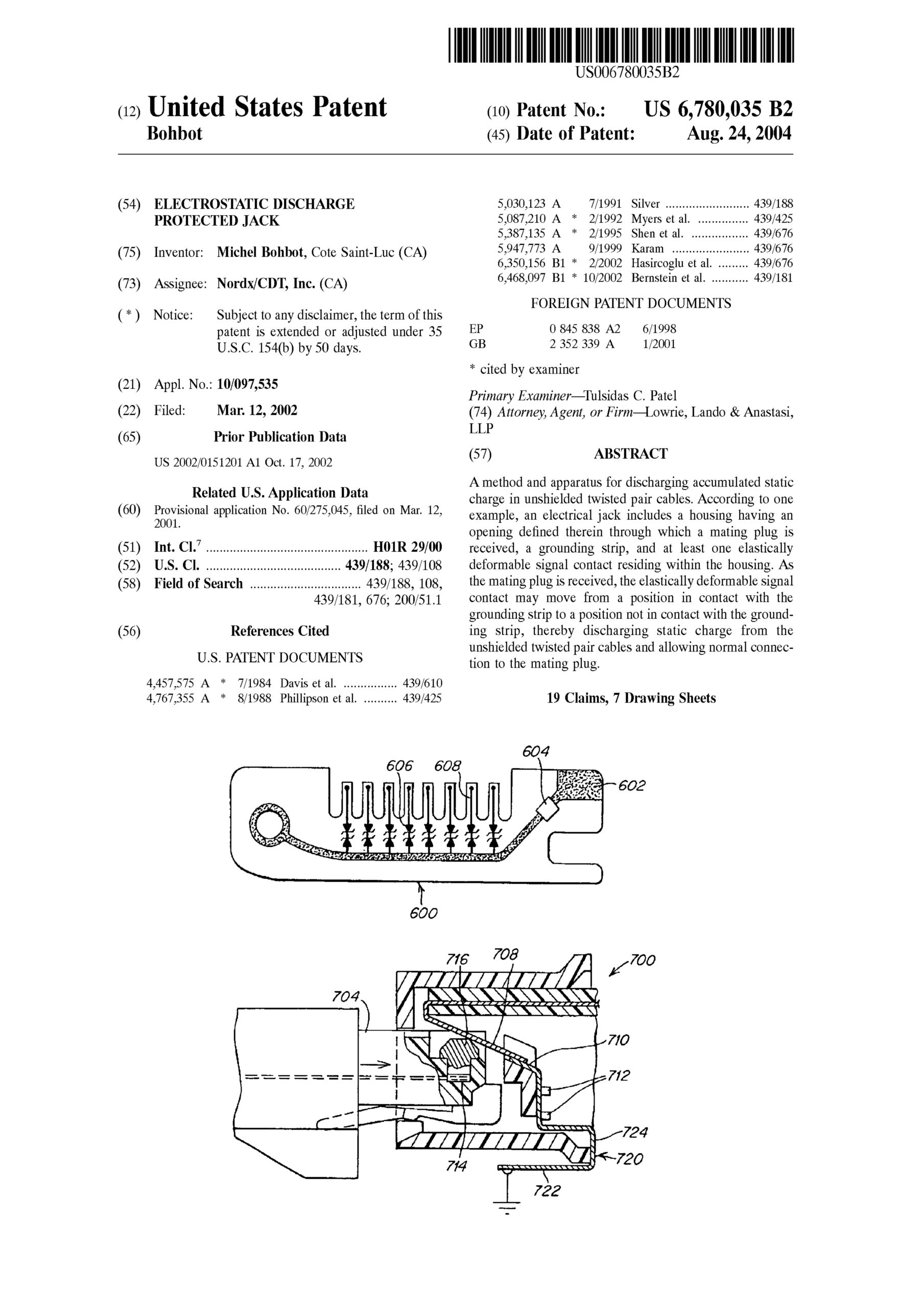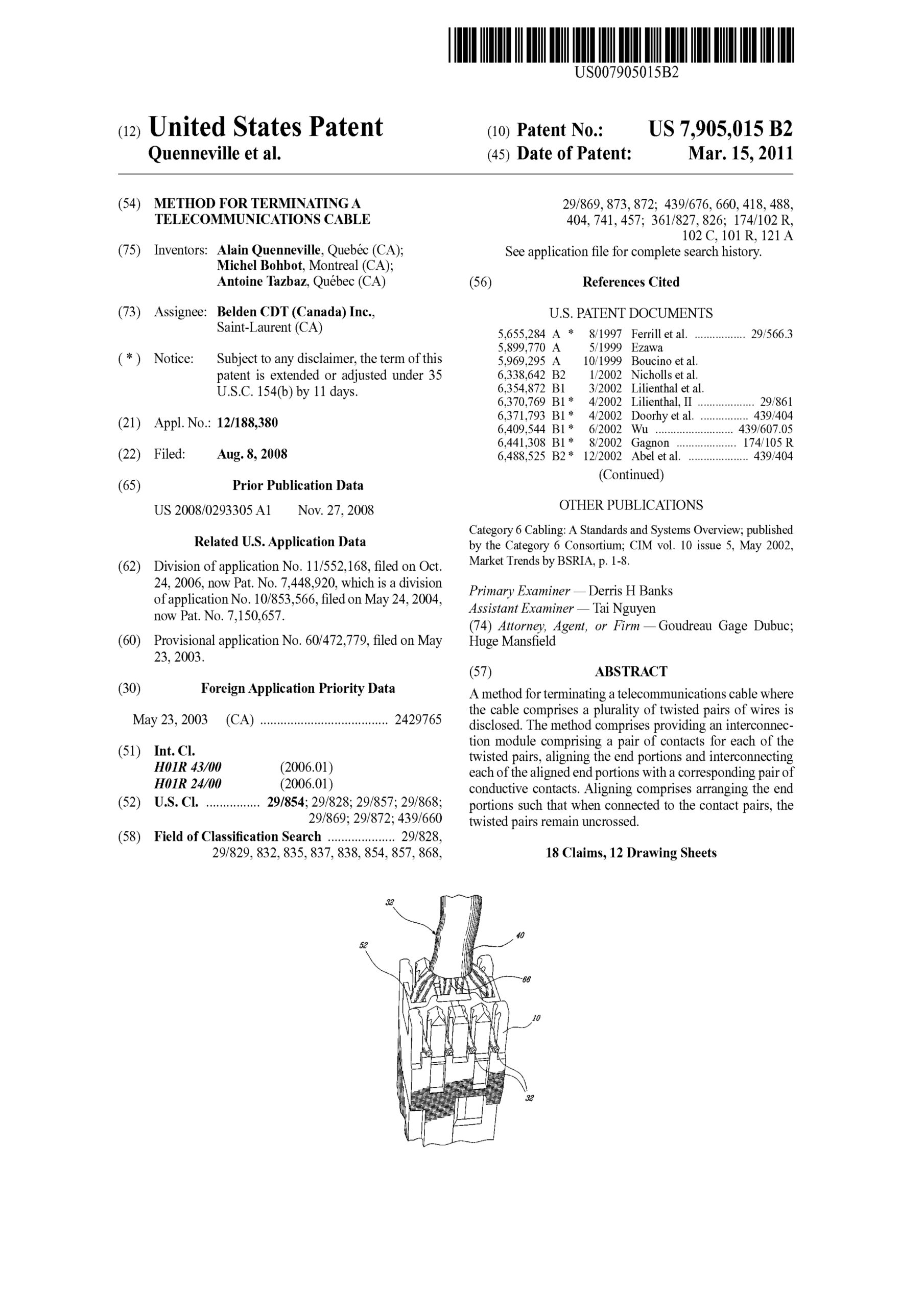Coupler connector and cable terminator with end contacts
An assembly comprising a cable terminator comprising an elongate wire guide comprising a top end and four conductor pair receiving channels, and a securing cap configured for installation over the top end and comprising four pairs of piercing contacts exposed on an upper surface is disclosed. Each pair of the piercing contacts are interconnected with a respective conductor pair, and a coupler connector comprising a forward surface comprising an RJ-45 compatible socket, wherein tines are exposed within the socket and a rearward surface comprising a cable terminator receiving socket. Pairs of contacts are exposed on an end wall of the socket. Each of the tines is interconnected with a respective one of the contacts. When the cable terminator is inserted into the cable terminator receiving socket, the upper surface of the securing cap is positioned against the end wall and each of the piercing contacts comes into contact with a respective one of the contacts, thereby interconnecting each of the tines with one of the conductors.
